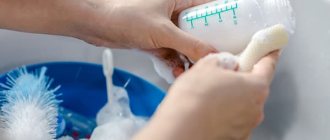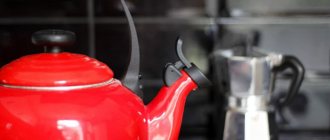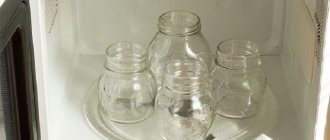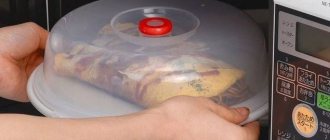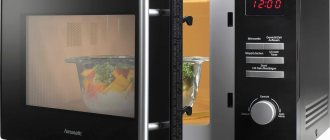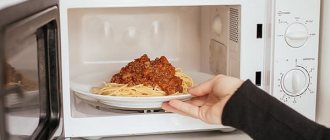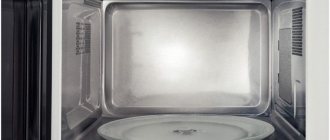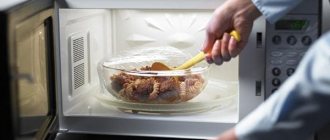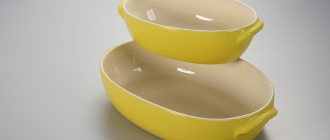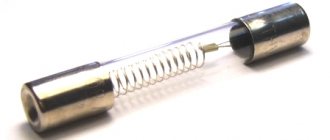There are different ways to sterilize children’s dishes: from ancient “grandmother’s” methods (regular boiling), to modern ones - using various devices and devices. Sterilizing bottles in the microwave is one of the reliable methods that does not require financial costs or effort. Let's look at how this procedure is performed.
Sterilizing baby bottles in the microwave
Every mother knows that sterilizing children's dishes is a mandatory rule while her baby is small. This is usually done before the child reaches one year. Since this process helps eliminate bacteria that can harm the body of a small person. The immune system at an early age is poorly developed and cannot provide the child with complete protection. Thus, the absence of this method of disinfecting feeding devices can lead to pathogenic microorganisms entering the newborn’s body and, as a consequence, the formation of colic, stomatitis, and so on.
Sterilizing bottles at home
The baby's immune system is not yet fully developed, and simply washing objects that come into direct contact with her mouth is not enough. Sterilization will help prevent the penetration of microbes that can cause nausea, vomiting, diarrhea, and abdominal pain into the baby’s body.
Before you start sterilizing baby bottles, you need to prepare them. The preparation process includes the following:
- Pre-rinse in running water;
- Rinse with warm water and a mild detergent and clean the inner surface with a special brush. If the milk residue is greasy or difficult to remove, water may not do the job.
Preparing for sterilization
Important! It is better to use a special liquid for washing children's dishes or baking soda.
- Rinse thoroughly using several waters. The foam from the detergent must be completely removed.
On sale you can find bottles made of glass and plastic. Both types can be washed without problems, but glass ones are better sterilized. Plastic ones are not so resistant to temperature influences; they can become deformed. The most dangerous thing is that plastic from unscrupulous manufacturers can release harmful substances that end up in the baby’s diet.
Important! If nipples or bottles show signs of damage, they cannot be continued to be used, as dangerous microorganisms get into small cracks and are not removed by washing.
In a home or apartment, you can sterilize bottles and other children's items in different ways. Each mother determines the optimal method for herself.
Sterilization can be performed by physical or chemical methods. At home, the former are more often used. Basically we are talking about thermal sterilization - exposure to high-temperature steam or boiling water.
Sterilization at home
Previously, children's dishes were sterilized by boiling. Nowadays, when technology does not stand still, there are more civilized approaches. For example, electric sterilizers. They are very simple and easy to use, but they are not cheap either. Therefore, there is a simpler, more effective and cheaper option - sterilizing bottles in the microwave. This method takes very little time, which a young mother already has very little time to spare. You don’t need to put a lot of effort into it, just follow certain instructions, which can be found below.
The microwave oven is no longer an exclusive technology. It greatly simplifies the process of preparing and heating dishes, and at the same time has an affordable price. And the fact that you can sterilize baby bottles in it is a huge plus. At the same time, children's dishes will not crack or deform, which is a big advantage over regular boiling. Bottles must be prepared for the sterilization process:
- Disassemble the bottle so that all its components are separate;
- Wash with baby soap, baking soda or a special detergent. To clean dried food, you need to use a specially designed bottle brush;
- Rinse all dishes thoroughly in warm water.
When sterilizing, it is better to use distilled water so that unnecessary deposits do not appear on the dishes over time.
How often do you sterilize bottles?
Regarding the frequency of this procedure, it can be noted that it should be carried out regularly, but not after every feeding of the child.
Important! Research from the medical community has confirmed that to keep baby's dishes clean, washing them with hot, soapy water is sufficient, provided that clean drinking water is used.
It is necessary to sterilize bottles in the microwave or any other way in the following cases:
- Before using purchased utensils for a newborn for the first time.
- After each wash of the bottle with water from a well or borehole.
- After any illness of the baby.
- After using the cookware for a long time.
We have successfully dealt with the question of at what age to sterilize bottles, but how to carry out the process itself? Really, in the modern world they haven’t come up with anything better than boiling? Of course, there are plenty of options today, but first let’s look at how to prepare children’s dishes for this procedure.
Types of sterilization processes
There are several options for sterilizing baby bottles in the microwave:
Method 1. Without water
For this method, the dishes must be wiped dry. Then place it in a plastic container, which must first be cleaned of dust with a cloth.
The container is tightly closed with a lid and placed in the microwave for 1 - 1.5 minutes. Then, using a towel, take it out and take out the bottles. They need to be wiped dry.
Method 2. With adding water
The whole process is similar to the first method, but at the same time, a little cold water is poured into the container with the dishes. The sterilization time varies from 5 to 7 minutes.
It is very important to choose the right size container:
- It must be placed in a microwave oven;
- The dishes to be sterilized must be freely located in it.
If the sterilization process was carried out long before feeding, then the bottles should be placed in the refrigerator.
By using a bottle sterilizer
It is also possible to sterilize baby bottles in the microwave using a special sterilizer. It can be purchased in children's specialized stores.
To do this, water is poured into it to the indicated mark, bottles are placed and sent to the microwave oven. The required time is indicated in the instructions. Usually it's 6 minutes.
Afterwards, you need to wait until the sterilizer cools down a little, take out the dishes and wipe them dry.
It is important to note that each bottle must be opened.
Using special packages
Special packages for sterilizing bottles in the microwave can also be purchased in specialized children's stores. As a rule, such packages can be used repeatedly. The specific quantity is indicated on the packaging and depends on the manufacturer.
This method is very simple. Feeding equipment is placed in the bag, filled with water and closed. After which it is placed in the microwave oven for several minutes. At the end of the time, carefully remove the bag, and if there is a drain for water, then drain it. If there is no such drain, you should wait until the bag cools down. Otherwise, you may get burned.
This type of sterilization is convenient due to its mobility. You can take special bags with you if there is a microwave where you are going.
Using special bottles
The easiest way to sterilize is to purchase special self-sterilizing bottles. Thanks to this method, the effectiveness of sterilization is increased, since this process can be carried out immediately before feeding.
To do this, you need to pour some water into a pre-cleaned bottle, put on all the ingredients and put it in the microwave for 5 minutes. Then wait until it cools down a little, pour out the water and start feeding.
Each parent chooses how to sterilize baby bottles in the microwave, depending on their preferences. The choice also depends on the size of the microwave oven and its capabilities.
Sterilization methods
There are several main methods of sterilization , each of them requires compliance with certain rules. It is worth considering them separately and choosing the best one. This will protect the baby in the first months of life from germs, fungal spores, and viruses.
Sterilizing a bottle in boiling water
This classic method does not require special tools or devices. The procedure is carried out using a pan of water. The downside is that when the nipple is boiled, the material is often deformed.
Sequencing:
- Fill the pan 2/3 full with water.
- Dip all the devices into it until the liquid completely covers them.
- Place a plate or bowl on top to prevent items from floating.
- Heat water to boiling and boil for 10 minutes.
- Remove container from heat.
- Remove items from the water when they have cooled.
Be sure to read:
Storing bags in the kitchen with your own hands: 7 fashionable ways + photos, videos
The sterility of the dishes remains for about a day, then the procedure should be repeated.
Sterilization using a microwave
To simplify the disinfection process, use a microwave oven. You can safely sterilize household items in it.
Attention! It is strictly forbidden to place metal parts of dishes in the microwave, as this will lead to damage.
Procedure:
- Place utensils and pacifiers in a special bowl.
- Fill it with liquid so that the liquid fills all the voids.
- Close the container with a special lid.
- Put it in the microwave.
- Turn on the microwave at full power and disinfect for 8 minutes.
There is no need to rush to take out the devices; let them cool down first.
Many manufacturers of baby supplies produce special dishes that can be processed in the microwave without the use of liquid.
Simply place the bottles in the microwave and turn it on for 5-7 minutes. During the procedure, the material is not deformed.
Sterilization using a multicooker
A slow cooker is also suitable for disinfection. Wash the container thoroughly before use.
Main processing methods:
- Place items in the bowl vertically or horizontally (depending on the model). Fill with liquid to the maximum. Select temperature mode 100 °C. Treatment duration is 15-30 minutes.
- Pour water into the container to fill 1/2 of the entire volume. Place a grate on top intended for steaming food. Place the bottles on it and close the bowl with a lid. Turn on the steamer at 100°C. The duration of the procedure is 15-20 minutes.
Regardless of exposure to water or steam and the method chosen, bottle sterilization will be complete.
Modern models of multicookers are equipped with a disinfection function:
- water – for sterilizing bottles,
- steam – for processing nipples and nozzles.
Sterilizer
On sale you can find a special electric sterilizer that is designed to disinfect children's household items. The device fits 6 bottles and nipples.
Basic actions:
- Fill the device with liquid. The volume depends on the model. For standard sterilizers it is 200 ml.
- Place the bottles with the neck down, since the heating device is at the bottom and the steam rises up. Place nipples on top.
- Close the lid of the device tightly and check that there are no gaps so that the steam does not escape.
- Turn on the sterilizer for 5-10 minutes.
- After the procedure, you cannot immediately take out objects to avoid getting burned.
Be sure to read:
DIY storage box for children's toys made from scrap materials
If the sterilizer lid is not opened after disinfection, the bottles can remain in it for up to 6 hours.
Steam sterilization
Steam treatment is the simplest and most accessible method.
The procedure is carried out in several ways:
- Place the kettle on the stove. Boil the liquid and open the spout. Take the bottle with an oven mitt and turn it upside down. Bring it to the steam stream and leave for 15 minutes. Place the nipples separately in a cup and pour boiling water over them.
- Fill the pan 2/3 full with liquid and boil. Place a wire pan rack on top of the pan and place bottles and teats on it. Processing time – 20 min.
Do not forget! To avoid getting burns when disinfecting with steam, you should follow safety precautions.
Disinfection with antiseptic tablets
In this case, disinfection of children's equipment is carried out without the use of hot water. The method is suitable for parents leading an active lifestyle. For the procedure, you must purchase antiseptic tablets from the pharmacy in advance.
Algorithm for the procedure:
- Dissolve the tablet in cold water according to the attached instructions.
- Pour the solution into a deep container or bag.
- Immerse bottles and nipples in it so that the liquid completely covers them.
- Leave for 30 minutes.
The tablets contain sodium dichloroisocyanurate, which when combined with water forms a disinfecting solution that is safe for processing.
Despite the availability of the method, young mothers prefer to use it only on the road, when it is not possible to carry out steam treatment.
Microwave sterilization
In a microwave oven, you can not only defrost semi-finished products and prepare delicious dishes - it is also a wonderful device for sterilizing kitchen utensils, household items, and baby bottles. How to sterilize in the microwave - read our article.
Advantages of microwave sterilization:
- Microwave disinfection is safer than steam sterilization.
- Faster than boiling.
- More effective than chemical disinfection.
- Suitable for glass, ceramic dishes, some types of plastic, silicone, cutting boards.
- An excellent way to disinfect personal hygiene items - toothbrushes, combs, sponges.
Disadvantages of the process:
- Limited oven space. This is inconvenient during canning, when you need to sterilize many jars. But from this point of view, the traditional method is also far from perfect.
- Do not place metal utensils, dishes with gold or silver rims, coating, or other metal elements in the microwave.
How to properly sterilize in the microwave - 5 useful tips
- To regularly disinfect personal hygiene items, heat the item for 1 minute at maximum power.
- Kitchen boards (for cutting fish, meat) accumulate many harmful microorganisms. To sterilize, wash the board on all sides, rub with a slice of lemon and lemon juice (lemon perfectly neutralizes unpleasant odors). Place in the oven for 1–1.5 minutes.
- Wet sponges and dishcloths with warm water (you can add lemon juice) and heat in the microwave for 1.5 minutes. After cooling, rinse in clean water. This procedure will destroy all bacteria in the fibers of foam rubber, cellulose, and microfiber.
- Instructions for processing cans. Fill a jar with some clean hot water and place it in a suitable container with the same water. Run the most powerful cycle, boil for no more than 3 minutes. To preserve jam, use hot jars; for cucumbers, let them cool on a clean towel, bottom up.
- Disinfection of baby bottles. Take the bottle apart. Remove the cap, pacifier, and retainer. Wash everything thoroughly with a light soda (saline) solution, detergent for children's dishes using a special brush. Rinse thoroughly with clean water. Place the bottle (and all accessories) in a thermal glass container, fill it completely with water, and cover with a lid. Run the most powerful mode for 6-8 minutes. A microwave sterilizer for baby bottles is ideal for this treatment.
Can bottles be sterilized in the microwave?
For my future self (maybe there will be more children) and for you, I am writing my detailed list of things that were useful to me in the first year of my child. I won’t include the clothes, they are in a separate post (link). So, chemistry, devices, etc. first year of life! Continue reading →
Let me start with the fact that my son was bottle-fed from the first day. We discussed the issue of formula, diet and portion size with the doctor; this part, in my opinion, should be discussed correctly with a specialist, and not rely on the personal experience of friends/acquaintances/Internet advisors. However, there is an everyday component of the process, which, for example, at first caused me wild horror: the child is very tiny, everything must be sterile, how not to make a mistake, what to use, how to store it. This is what I would like to talk about in my post. Continue reading →
I decided to pick up my old post and at least re-read what I needed to buy. Eh, only the photos are missing. Although with the second one you look at purchases differently. I hope my post will help you choose what to buy for your baby. All of the following is based only on my personal experience) Extract. 1. Envelope for discharge. We checked out in the summer, and even in 2010, when it was 35 degrees Celsius. So I bought an elegant white slip. Wrapped in a blanket, photographed with a bow as expected and unwrapped. But I bought the envelope because... bought it. Continue reading →
Previous parts are here and here. 1. Bottles. As long as the mixture is diluted a little, 120-125 ml bottles are more convenient. Our first ones are Avent Standard 120 ml (1 pc.), Avent Natural 125 ml (2 pcs.) and 2 pcs. given as a gift from an unknown company. Total 5 bottles, 4 for mixture and 1. Continue reading →
For my future self (maybe there will be more children) and for you, I am writing my detailed list of things that were useful to me in the first year of my child. I won’t include the clothes, they are in a separate post (link). So, chemistry, devices, etc. first year of life! Continue reading →
Girls, explain to me about the sterilizer, I’m reading this and can’t understand. Let’s say the company Avent is for the microwave, that is, you load bottles and water into the microwave. That is, it does not work from the network, but is intended specifically for microwaves, and if I want it to work from the network, then I need to choose another model? I understand correctly? And also about the bottle dryer, I’ll take out the already sterilized bottles and hang them on the dryer, maybe in an hour or two I’ll need them and should I sterilize them again? That is, essentially a dryer. Continue reading →
Which one should I choose? For some reason, boiling the bottle and breast pump began to bother me. What do you think, is it worth buying? And which one is better? Electric or microwave? There are a lot of them there. and the price range is wide. what is the difference? Has anyone tried to sterilize in a slow cooker? Our new multicooker has such a function, but I’m not sure yet. Continue reading →
A very useful thing from Munchkin, bags for sterilization in the microwave: Munchkin, Latch, Sterilizer Bags, 6 Bags For breastfeeding, and in general with a baby, it’s very convenient! Continue reading →
I need a miracle warmer for both bottles and jars of food)) What I want: So that I can use different bottles (both in size and by manufacturer). So that it warms up quickly. Z.Y. I just read that baby formula for newborns should be 37 degrees. I have no idea how to achieve the exact temperature in other sources. Maybe someone can help and advise. Simplicity and efficiency are very important to me. There is a microwave, but it seems harmful to heat formula in plastic bottles for newborns. There is a thermopot, but there the minimum temperature is 45 degrees (for formula. Read more →
Selling a sterilizer in perfect condition. The only thing is without a box. I used it myself 5 times. It’s a very good thing: you pour in a little water, put it in the microwave for 7 minutes, and then take out the bottles, etc. with special tongs and let them cool. Lots of items fit. Can be used for toys, children's dishes, etc. Price: 600 rub. From the manufacturer: Dr.Brown's microwave steam sterilizer is ideal for sterilizing baby bottles and feeding supplies. Simply place the bottles and their components, cover the sterilizer with a lid and place it in the microwave. Behind. Continue reading →
Luxuriously designed, Sunwing Kamala Beach Hotel is conveniently located 35 minutes' drive from Phuket Airport, 10 minutes' walk from Phuket Fantasea and Kamala Village, 10 minutes' drive from Patong Beach, 15 minutes' drive from Laguna Phuket Golf Course, on stunning sandy Kamala beach, in the western part of Phuket island. I would like to immediately say that in this place there was not that terrible tsunami several years ago, because this village and the bay are successfully hidden from the ocean, so in this place. Continue reading →
A convenient sterilizer that fits in the microwave, produced by PHILIPS under the Avent brand, is one of the essential attributes in the kitchen of a young mother. A convenient container that can hold four baby bottles and sterilize them - a must before feeding babies. For their fragile immunity, it is categorically undesirable to interact with lactic bacteria that form in children's dishes. In this case, sterilization is carried out using a medical steam method, without the use of chemicals. This method is the most reliable, safe, and at the same time simple and accessible. Continue reading →
Dilution of formula for newborns
Preparing food for a baby is an important process. You need to know how to prepare formula for a newborn so that your baby receives healthy and tasty food every day that will help him grow and develop.
To feed your baby high-quality nutrition, you need to buy a good formula that is suitable for his age and other indications. For example, for the little ones, Similak Premium, Nan, Nestozhen and other brands received good ratings from doctors and parents.
Before diluting formula for newborns, you need to purchase bottled water intended for children. It contains a minimal amount of microelements that can overload the child’s kidneys; such water does not need to be boiled. If bottled water is not available, you can use filtered tap water, but be sure to boil it first.
Breeding formula
Infant formula is valuable and healthy for the baby if it is prepared exactly according to the included instructions. They indicate how to properly dilute infant formula and also contain other necessary information.
What to pay attention to:
- The proportions of powder and water are most important for a child. The box with the product always indicates how many scoops of powder need to be diluted in a certain amount of water, the age of the baby, as well as the number of servings per day;
Important! Preparing a mixture that is too thick or too watery can harm your baby. The baby’s digestive system may not be able to cope with the increased amount of microelements and protein in one serving. If you dilute the powder with too much water, the child will not get enough food.
- If the manufacturer indicates that the mixture is suitable for consumption within 4 weeks after opening the package, then after this period it must be thrown away;
- The child grows, so the amount of food gradually increases. If at 6 months of age he needs to drink 180 ml of the mixture, then after 2 months he will drink 210 ml. When diluting more food, the proportions of water and mixture are maintained;
- Breeding technique. You need to dilute the powder by adding it to a bottle filled with water, and not vice versa, adding liquid to the powder. Then gently rock the bottle until the mixture is completely dissolved. Vigorous shaking will cause the milk to froth;
- It is important to familiarize yourself with information about the temperature of the water used. If it is too cold, the powder will not dissolve and forms lumps.
Mixture temperature
To make eating effective and comfortable, you need to know what temperature the formula should be for feeding a newborn.
Important! Mixing the powder with boiling water destroys the valuable vitamins and nutrients contained in the mixture. To ensure that the product formula retains its properties, it should not be prepared at high temperatures.
The best formula temperature for feeding a newborn is 36-38°C. The product is usually prepared at a temperature of about 40°C. It is preferable not to provide food for a newborn in advance, but to prepare it right before use. It is also forbidden to leave uneaten milk for a later date - dangerous pathogenic microorganisms can form in food that has come into contact with the baby’s saliva.
Algorithm for bottle feeding a baby:
- Dilute the required amount of mixture in a clean bottle. Sometimes it is necessary to pour in breast milk, which must first be expressed;
- Install the nipple and make sure that the milk does not flow out in too frequent drops;
- Measure the temperature of the milk by applying a couple of drops to the skin of your wrist;
- Give the bottle to the child in your arms. In this case, it should be held at approximately an angle of 45°;
Feeding a baby from a bottle
- When the baby has finished eating, lift him upright and maintain in this position for about 5 minutes. This will allow air to escape if the baby burps, and food will not enter the respiratory system.
We suggest you familiarize yourself with How to remove traces of tape (paper or double-sided) from leather, fabric, linoleum, wood, metal, glass, and also how to remove residues from mirrors and doors?
It is beneficial for the child to come into contact with the outside world and bacteria. This way his body will learn to produce antibodies. Sterile bottles and pacifiers do not weaken the newborn’s immunity, but only protect his digestive system from E. coli and other microbes. While the child is small and weak, it is better not to take risks and regularly sterilize baby feeding equipment and pacifiers.
Why do you need to sterilize dishes for infants?
Before considering the available sterilization methods, it is necessary to answer the question: “Do dishes for babies need to be subjected to any processing?” Russian experts strongly recommend sterilizing containers intended for feeding a baby, as well as baby nipples, before each use.
The thing is that the nutrient medium that forms after milk and similar artificial mixtures is an excellent place for the proliferation of harmful bacteria and foreign microorganisms. In addition, young parents need to understand that a breastfed baby and a formula-fed baby need different protection, since mother's natural product contains all the necessary substances that help to naturally strengthen the immune system of a small child.
Preparing children's dishes for sterilization
Before sterilizing baby bottles in the microwave, let's find out how to properly prepare them for this process:
- First of all, you need to disassemble the bottles, separating the nipples from the caps.
- For washing, you can use a special detergent for children's dishes “Eared Nanny”, baking soda or regular salt.
- Of course, you can’t do this without a brush. For washing baby bottles there is a special brush equipped with an additional small-diameter device for nipples.
- Wash all parts of the bottle with a brush, then thoroughly rinse off the detergent under running water.
Advice! If you don't have a small brush, you can pour baking soda into the nipple and press it with your fingers to get it into the holes. The pacifier should be rinsed thoroughly, using kneading movements, to remove any remaining soda from the holes.
For or against
Regarding whether it is necessary to boil baby bottles and pacifiers after each use, experts sometimes hold directly opposite views.
Some pediatricians (in particular, the country-famous Dr. Komarovsky) believe that excessive sterility is more likely to harm babies, causing:
- decreased immune status, which weakens without the need to strain in the fight against pathogens,
- the occurrence of various allergies, which is also explained by a general weakening and lack of training of the immune system.
In their opinion, it is enough to simply wash a pacifier or bottle well under running water, then rinse with boiling water, and sterilization of baby utensils for a newborn is only necessary if milk is to be stored in it.
But is it possible, based on this, to say that sterilizing bottles for newborns is not such a mandatory process?
Scientists say that immunity in newborns is in its infancy. In its full form, it is formed gradually, during the first year of life, and when it comes to weakened babies, in order to avoid infections, you need to sterilize children's utensils quite often. It is also necessary to sterilize new nipples and bottles, or those that have not been used for a long time.
In addition, sometimes it happens that the electricity in the apartment is turned off for a long time, as a result of which the milk mixture in the refrigerator turns sour and stinks. The smell of sour milk is very persistent, it is perfectly preserved in the bottle; it is not possible to get rid of it and completely wash baby bottles of plaque by simply rinsing - they need to be thoroughly disinfected.
Thus, it is not possible to completely abandon disinfection, and every young mother wants and should know how to properly sterilize bottles.
Sterilization methods
Currently, there are many ways to sterilize children's dishes. Most of them are time-tested, many are relevant and modern, which is why they completely solve the issue of disinfection of objects intended for babies, including bottle nipples.
It is worth listing the most popular methods of processing children's dishes:
sterilization using a microwave oven;
using a multicooker, etc.
Every mother has the right to choose the method that suits her.
At what age should bottles be sterilized?
Children's accessories should be sterilized before the age of one and a half years. Afterwards, the child begins to actively explore life, including putting all sorts of objects into his mouth, and therefore encounters various microbes.
At this point, the immune system is already well formed and is able to withstand the attack of microorganisms. Mom just needs to thoroughly wash the dishes from any remaining milk and formula.
Be sure to read:
Storing bags in the kitchen with your own hands: 7 fashionable ways + photos, videos
Using a steam sterilizer
A special microwave steam sterilizer is a small plastic container that easily fits in the oven chamber. The container is equipped with a tight-fitting lid with holes for steam to escape. The container holds up to 6 standard baby bottles.
The sterilization process consists of performing simple steps:
- Place the prepared dishes in a container on a stand, necks down.
- Pour a glass of filtered water.
- Close the sterilizer with a lid and place it in the microwave oven.
When removing bottles from the sterilizer, you should use tweezers to avoid getting burned. The device is convenient because the sterility of the dishes in it is maintained for several hours.
The use of special bags for sterilization of production is a simple and inexpensive method available for widespread use. They can be used up to 20 times. The bag fits up to 3 standard bottles.
They are easy to use:
- Place the prepared bottles in a bag.
- Add water.
- Seal the bag and place in the microwave.
A 3-minute steam treatment guarantees the destruction of 99% of germs and bacteria.
The main advantage of a steam sterilizer over its electronic counterpart is its relatively low price. You can purchase a special device for microwave ovens for an average of 1,700-2,000 rubles. The cost of electronic devices is much higher, can reach 10,000 rubles. The steam sterilizer can process 4 large bottles and up to 6 standard bottles at the same time.
The disadvantage of devices designed for microwave ovens is the inability to process metal utensils. Placing such items in the container is strictly prohibited to avoid damage.
Using a steam sterilizer
Another effective and popular processing method, tested by our mothers and grandmothers, is steam processing of containers. More delicate, but the reliability of its use is slightly lower than that of the previous sterilization method.
Steam treatment can be carried out in several ways:
using a colander over a simmering pan;
using a special sterilizer.
It is worth noting that the latest method of processing children's dishes is currently gaining popularity. Its demand is due to the ease of operation of such devices. Parents just need to press a button. In addition, in children's goods stores you can choose a sterilizer to suit every taste and budget.
Recommendations for caring for children's dishes
Children's dishes require special attention:
- It is necessary to monitor the condition of the bottles: if cracks appear on them, it is better to throw them away. Bacteria can accumulate in cracks.
- It is very important to use filtered water for sterilization: the life of bottles and nipples will be significantly extended. When using regular water, the plastic turns yellow and the nipples lose their elasticity.
- Pediatricians say that the immune system of children is fully formed by 1-1.5 years. It is up to this age that experts recommend sterilizing children's dishes.
Sterilization in the microwave takes minimal time. After all, it’s better to spend 5-10 minutes processing children’s equipment than to then treat your baby for intestinal infections.
Can baby bottles be sterilized in the microwave?
Of course, almost every parent is concerned about the issue of processing children's dishes. When asked whether a bottle can be sterilized in a microwave, most experts answer in the affirmative. This is a fairly popular method of processing children's dishes. Its demand is due to the simplicity of the procedure, as well as the absence of the need to use a large number of additional devices and instruments. You only need to have a glass container that will completely fit baby nipples and bubbles.
Sterilizing bottles in the microwave takes very little time, in most cases about 6-8 minutes. It is necessary to take into account the features and characteristics of the electronic device with which the procedure for processing children's dishes is carried out.
Features of the procedure. Description
New mothers and fathers who have chosen the method of sterilizing children's items using a microwave need to follow certain conditions and rules during the procedure to achieve the greatest effectiveness. If the process is not organized correctly, it is possible not only not to achieve the desired result, but also to cause significant damage to the appearance of the dishes and nipples.
First you need to unscrew the bottle onto its parts (container, cap, nipple). Then you need to place them in a bowl of cold water and put them in the microwave.
You can sterilize baby bottles in the microwave in special bags with special marks up to which you can pour water. The disassembled bottle is loaded into bags filled with water and then placed in the microwave. The capacity of sterilization bags directly depends on the manufacturer's brand. For example, a Medela bag can hold 3 standard-sized baby bottles at once.
A huge advantage of sterilization bags is that they are reusable. You can carry out the procedure for processing children's dishes in them up to 20 times inclusive. In addition, the procedure time in the microwave when using special packages is reduced and is approximately 3-5 minutes.
You can sterilize bottles in the microwave using a device that fits directly into the microwave oven. This device is called a steam sterilizer. It is a container into which water is poured. The device is quite simple and easy to use. The device is placed in the chamber and the microwave is set to maximum power. The whole procedure takes no more than 10 minutes.
Cold water sterilization
For the convenience of mothers and fathers during a visit or travel, special chemical preparations have been created that can sterilize children's dishes even in cold water. Examples of such miracle pills are Milton and Bebe Comfort. You can buy them at the pharmacy, and should be used strictly according to the instructions.
Application:
- Dissolve the drug in cold water.
- Place baby dishes into the solution.
- After 30 minutes, remove the cutlery and rinse thoroughly with boiled water.
Important! This sterilization method does not damage the dishes in any way, but it is not recommended to use it constantly. For regular sterilization, use other methods described in this article.
